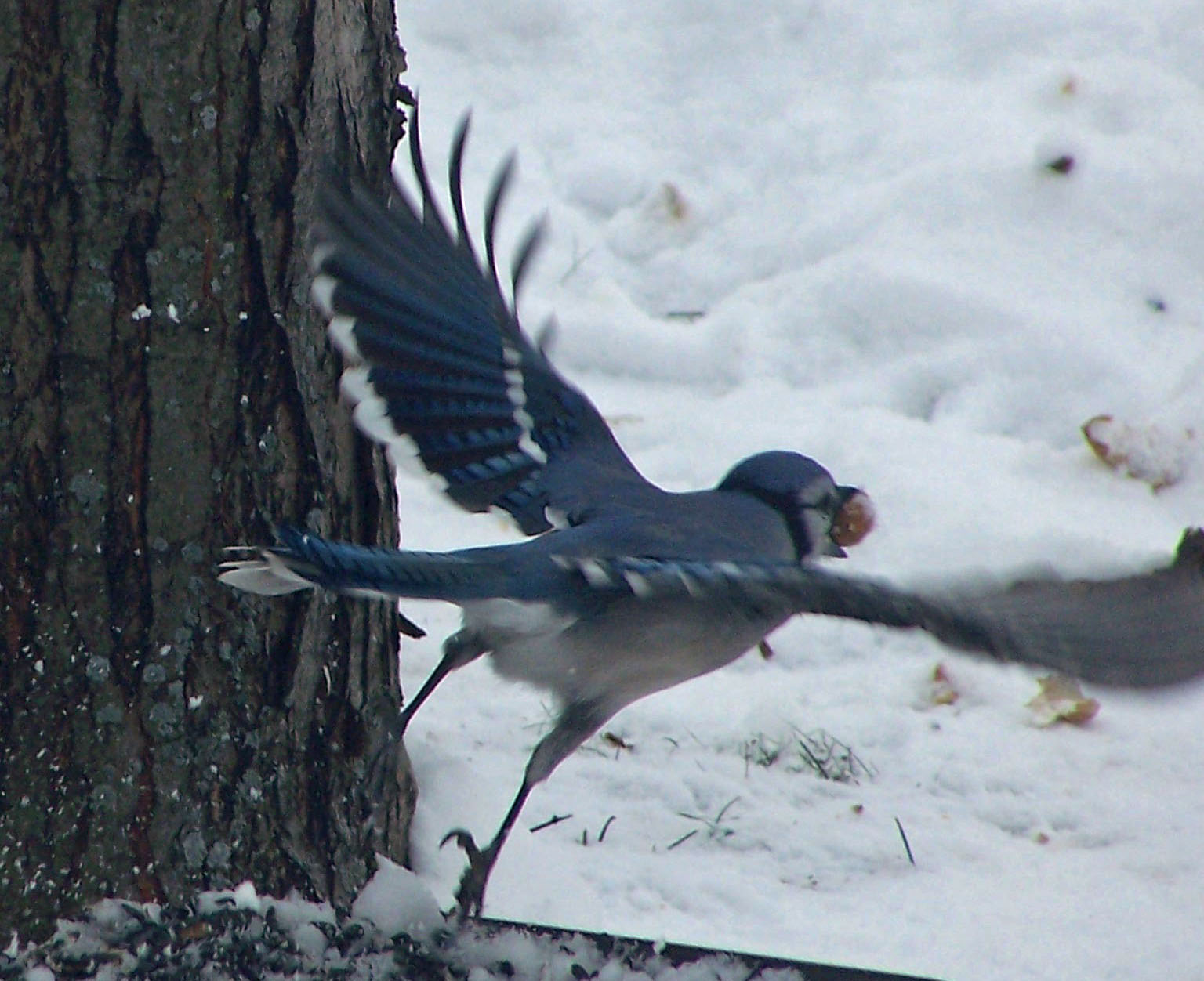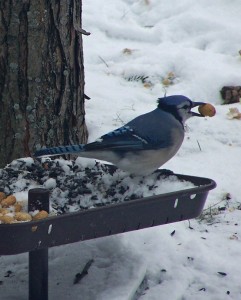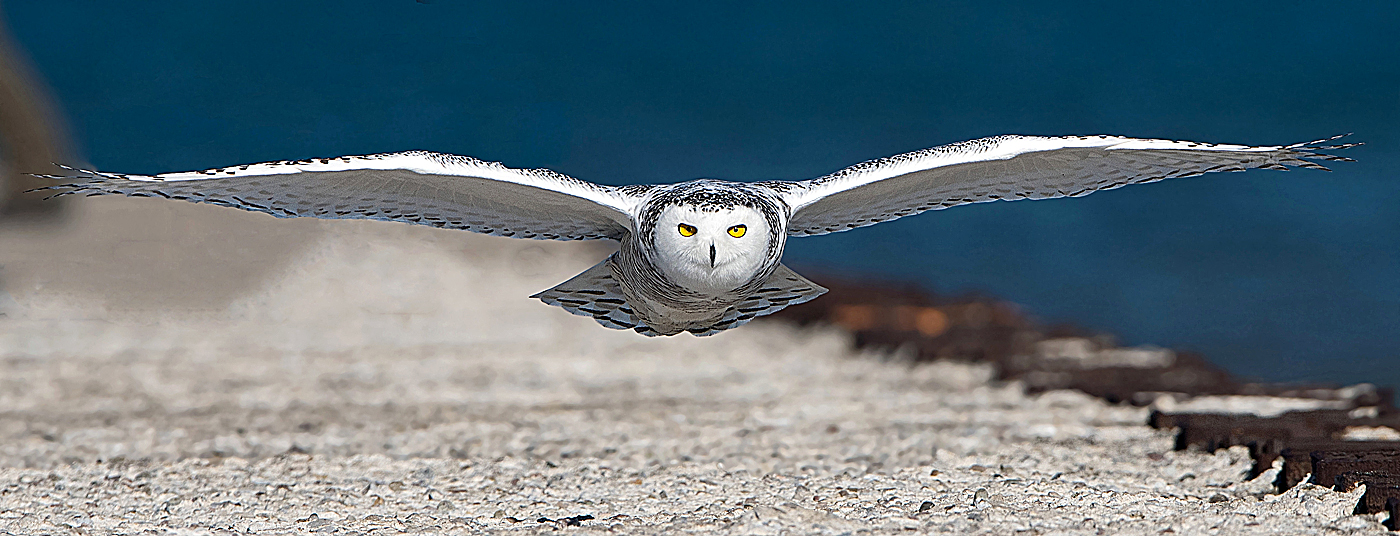Blue Jay Way

Blue jays may be the most recognized of all winter birds.
According to the Cornell Lab of Ornithology, this common, large songbird is familiar to many people, with its perky crest; blue, white, and black plumage; and noisy calls. Blue jays are known for their intelligence and complex social systems with tight family bonds. Their fondness for acorns is credited with helping spread oak trees after the last glacial period. Many bird lovers purchase peanuts in the shell to attract these colorful visitors to feeders.
“It’s for the birds,” Jack Antinore of Holley quips about his habit to keep the platform feeder tray stocked with peanuts. The birds squawk if the treats are not out when they are ready to eat. Equally entertaining is watching how a bird transports a nut in its beak and how it breaks into the shell to get the tasty morsels. The situation at the bird feeder can get tense — blue jays can be bossy and they are not the only peanut lovers in the bird world, or indeed in the backyard animal kingdom.
 Emily Antinore shot these photographs last week just after Jack loaded the seed tray. Blue jays are omnivores and will eat many things — nuts and sunflower seeds, berries, insects, and, yes, the eggs of other birds. Peanuts suitable for bird consumption can be raw or roasted, shelled or unshelled, but not salted and not flavored in any way. Blue jays also eat berries and fruit from shrubs and trees.
Emily Antinore shot these photographs last week just after Jack loaded the seed tray. Blue jays are omnivores and will eat many things — nuts and sunflower seeds, berries, insects, and, yes, the eggs of other birds. Peanuts suitable for bird consumption can be raw or roasted, shelled or unshelled, but not salted and not flavored in any way. Blue jays also eat berries and fruit from shrubs and trees.


